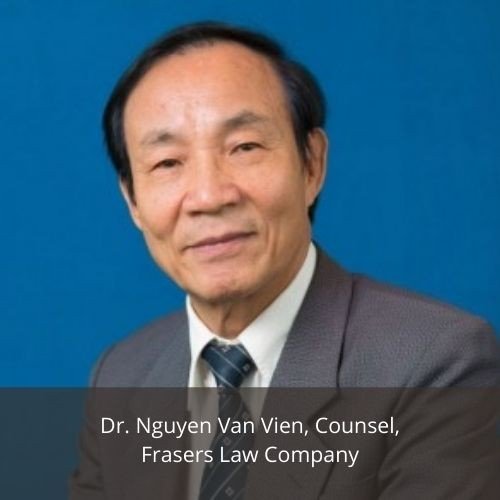Recent changes to Vietnam’s trademark examination practice
11 February 2021

The Vietnam IP Office (VNIPO) has incorporated some changes to the country’s trademark examination practice.
Some of these changes, which are not yet official, are centered on the following:
Letters of consent (LOC) and their acceptability in trademark registration
It appears the VNIPO will accept an LOC provided that 1) the applied-for trademark is not identical to the cited mark and 2) information about the applied-for and cited marks, the parties and statements from the right owner of the cited mark have to be in the LOC.
“In the long run, such change is cumbersome for applicants as well as for examiners, because instead of simple consent, the applicant now must prove - and the examiner must check to ensure - that the consent shall not affect the rights and interests of consumers,” said Dr. Nguyen Van Vien, counsel at Frasers Law Company in Ho Chi Minh City.
According to Nguyen, one of the founders of Vietnam’s contemporary IP system, one of the policies of the IP Law amendment which the country is now working on, is to create an appropriate balance of rights and interests between right holders and consumers.
The legal status of cited marks during examination phase of applied-for marks
Evaluation of a cited or prior mark’s legal status is done by counting the time from the date of filing or the priority date of an applied-for mark.
For Nguyen, this is a positive move.
“The change guides examiners to pay attention not only to the earlier filing date, but also to the current status of the cited marks. Such increased precision may take some time for examiners to check and may create some chance for applicants to proceed for termination of a cited mark for reason of non-use during five consecutive years,” he explained.

Registrability of trademarks in 3D and with foreign languages aside from Vietnamese, English and French
3D trademarks in local and international applications bearing the shape and container design of goods in the list of goods and services applied for will not be accepted for registration. If the said mark also contains distinctive characteristics alongside its 3D nature, the applied-for mark will still be unacceptable for registration.
As for other languages contained in trademarks, such marks may likewise be rendered unacceptable for registration if examiners determine that the foreign words used are descriptive of the applied-for goods and services.
“Indeed, it is not a change. It is a precision in interpretation of descriptiveness/distinctiveness of an applied-for mark,” said Nguyen. “Such precision may take more time for examiners during examination, as well as for applicants while creating marks for registration. As a rule, the mark examiners are very scrupulous in case of 3D marks containing a package design or descriptive words in any foreign languages, which usually take more time for substantive examination as compared with marks containing invented words.”
Registrability of trademarks with geographical names
Trademarks with geographical names will not be registrable under the following circumstances:
- The good/service and geographical name it carries are either not related or are related, yet, the geographical name does not reflect its geographical origin
- The relationship between the good/service and the geographical name is questionable or lacks clarity
- The relationship between the good/service and geographical name is deemed close
“Registration of marks with geographical names is extremely difficult due to the possibility of misleading consumers with respect to the source of goods/services. In some jurisdictions such as China, the geographical names are excluded from mark registration. Registration of such a mark is possible on case-by-case basis, and only if the applicant could convince the examiners that such mark as a whole may not mislead consumers. There is no written rule for registration of such marks yet, so the ‘change’ is applied in case-by-case basis, not for all similar cases,” said Nguyen.
These changes shall in no way turn out to be prohibitive to foreign applicants or hinder foreign investment, he added.
Two other recent changes involving trademark protection in Vietnam are already officially documented.
One relates to the possibility of re-examination by the VNIPO provided the applicant provides new details which can affect the result of substantive examination.
“The first one is highly welcomed by applicants,” said Nguyen, “but its implementation still depends on further clarification on what are the ‘new details’ and whether an LOC is a new detail or not.”
The second recent documented change requires the signatory of a Power of Attorney to be a legal representative of a legal entity.
“The second change requires the applicants and the selected IP agents to pay special attention to drafting the Power of Attorney for the legal representative - not an authorized representative - of the applicant to sign, in order to avoid unnecessary complication of authorization, notarization and legalization,” said Nguyen.
Espie Angelica A. de Leon






